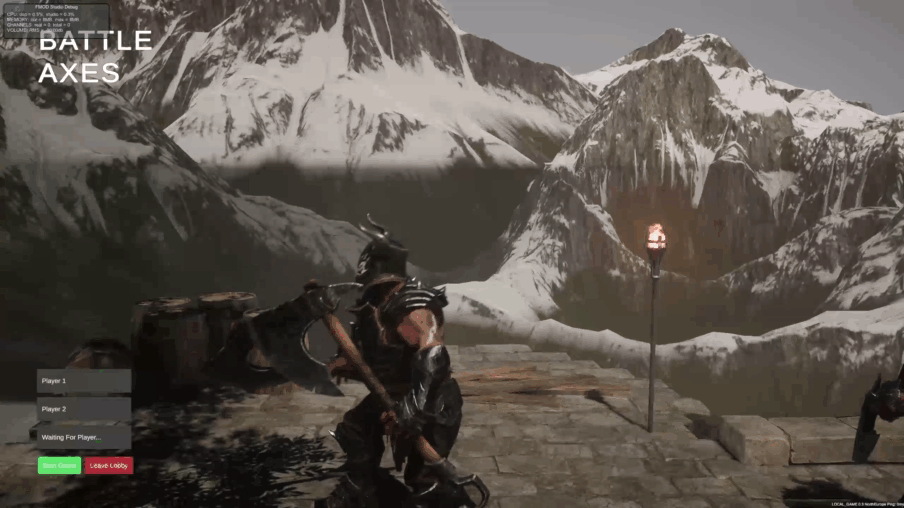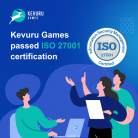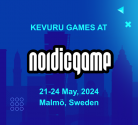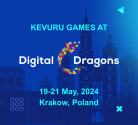When people play fighting games, they rarely think about mechanics, animation techniques, frames and other features that allow creating on-screen real-life actions of characters. The truth is while most gamers care about beating their opponents to a pulp, animators take upon themselves to make animations needed for a fighting game.
So, how to make fighting game animations? How many animations does a fighting game have? What are the best fighting game animations? What is the framerate of fighting game animations? Each of these questions is covered in our article in details. If you’re interested to find out more about principles, stages, and game examples in fighting animation, keep reading our material.
7 Key Principles of Fighting Game Animations
Video game animation is a sequence of images that displays movement in games. To design a good character, it’s necessary to have a basic understanding of anatomy and movement. In general, there are basic 7 principles that could be applied to animation in fighting games:
- Squash and stretch. It’s a technique that enables characters to make movements in specific directions. Using the squash and stretch principle, animators achieve a realistic effect of positions in games. A contrasting change of shape from a squashed pose to a stretch one and vice versa gives life to a character. Without this principle, the motion looks rigid and stiff.
- Timing and spacing. This principle shows the movement of a character or an object in games. Spacing describes the distance of drawings in a sequence. The closer it is, the slower the movement is. Timing is the number of images that defines the character’s actions in games. In 3D animation, such a technique has the following formula as time=distance/speed and speed=distance/time.
- Laws of motion. Issac Newton’s three laws of motion can be also applied to game animation. To communicate weight, animators should spend some time on changing the motion using the principle of timing and spacing. The same idea refers to the behavior of an animated character because it determines what effects must be performed in games.
- Anticipation, action, and reaction. These concepts explain the stages of movements. Anticipation predicts the action that is going to happen while the reaction shows that it has occurred in a game. Speed and time are the factors that influence the character and object’s movements as well. The faster they are, the more anticipation is required for game players to control different actions.
- Exaggeration. It’s a technique that creates the essence of actions making them look like the real ones. In animation, it’s necessary to design movements that exceed the player’s expectations. That’s why exaggeration is used to craft the key poses for characters that can perform unbelievable effects in fighting games.
- Overlapping action. It’s a principle that describes different parts of the human body and how they should be moved at various angles. The overlapping movement can be divided into primary, secondary, and tertiary actions. Altogether, they deliver the sequence of movements performed by game characters.
- Arcs and paths of action. Each action has invisible lines that display the process of movements. In animation, it’s called the path of actions. They are supposed to be effective with arcs – elements that describe how objects and characters are moved. For complex animations, it’s vital to describe several paths of action.
6 Stages of Work on Animation in Fighting Games
There are 6 essential steps to create animation portfolio in fighting games. So, let’s explain them one by one:
- Researching references. It’s an important step in animation as it gives a basic understanding of successful features for designing characters and objects. Also, this stage includes analysis and assessment that help animators select suitable references.
- Making scripts. It’s a process of outlining the story in animation describing visual effects, appearance, and transitions from one scene to another. The storyboard is a tactic used to sketch scenery, setting and other features.
- Fixing key poses. It’s a stage of improving the right poses to convey a story in animation. The key poses are known as ‘extremes’ because they depict extreme points in expressing mood and motion.
- Adding new poses. It’s a process when animators start from breaking the movement down adding new poses to the key ones. Such an algorithm intends to perfect motion for game characters.
- Fixing overshoot and overlapping action. It’s a technique that helps animators connect body parts of a character and finish motion. Overshoot ends fixing movements while overlapping action moves a character or an object at different rates.
- Polishing animation. It’s the final stage of animation that intends to strengthen physical movements and make them more believable to the audience. Animators break up their shots into several sections to improve motion.
Skills and Tools for Fighting Game Animation

The animating process is complex, and it can be done in various ways like in 2D, 3D, pixel art, and isometric projection. So, let’s find out what stages, skills, and tools are essential for animators to design a fighting game.
2D fighting animation is created in two-dimensional space – width and height – and it contains pre-production, production, and post-production. During the first stage, hire 2D animator to write the scripts, select the color palette, and prepare sketches. Production is the process of collecting all materials together to design the game animation fighting scene. Post-production is the final stage in which animators add sound effects and make edits. Blender, Moho, Toon Boom, Blender, Moho, Cinema 4D, Maya, Pencil 2D animation, etc. are the main tools used in 2D animation company.
Fighting game animation 3D is the process of manipulating 3D objects in three-dimensional space, and it has such stages as creating concepts or storyboards, modeling, texturing, rigging, and rendering. Storyboards and their ideation intend to showcase a game story in a three-dimensional environment. Modeling is the method of creating shapes in a 3D model. Once it has been designed, hire 3D animator to start texturing – an algorithm of adding new textures and colors to a model. Rigging aims to put a skeleton on a character, while rendering is the final stage of 3D animation services that generates a sequence of frames in scenes. The instruments used in this type of animation are ZBrush, 3ds Max, Daz3s, etc.
Pixel animation it’s a form of animation that creates graphics with the size between 8-bit and 16-bit. Actually, it’s used in video game consoles and graphing calculators. The examples of fighting game animations in pixel art are Savior Kickstarter, Broforce, etc. The key stages of developing a pixel fighting game are ideation, production, and release. The first step defines how the animation should be created, while the second one determines how movements and transitions should look like in games. The release is the final stage of fighting game animations that launches it in the game market. The needed tools for crafting fighting game animations in pixel art are Marionette Studio, Krita, Paint.Net, and others.
Isometric animation is the form of orthographic projection that represents three-dimensional objects in 2D space. The key principles of it are equal measure, illusive perspective, and identical object order in the composition. Game art isometric fighting animations give the illusion of the three-dimensional environment in which players plunge into the unusual experience. The stages of developing isometric animation are similar to pixel art, and they include ideation, production, and game launch. The animators use the following instruments to design the isometric projection as Illustrator and After Effects.
All in all, for each of these mentioned-above fighting game animations, the must-have skills are excellent proficiency in using digital tools, understanding of combat attacks and transitions. The other advantage of a highly-skilled animator is hands-on experience in tracking the game animating process.
How Many Animations Does A Fighting Game Have?
As a rule of thumb, a fighting game animation should have 30-60 frames per second to create fast-paced actions. There are various fighting game move animations like walking, resting, attacking, and winning that can lead to the death of your potential rival. Below, we’ll untangle them and explain what do they mean:
- Walking. The common frame rate of this movement is nearly 720p per 30 seconds. For the fighting walking animations, it’s a technical detail that enhances game stories and experiences.
- Resting. The fighting game resting animations describe how characters move and stop in the game. The main feature of this animation is that it has floating movements that determine when objects or characters stop or rest.
- Attacking. It’s a process of beating, assaulting, or cracking down the enemy. The fighting game attack animations represent actions that are interconnected with one another in a sequence.
- Winning. It’s the last step in ending the game story that defines whether a player won or lost in the game. For this reason, fighting game death animations are needed because they finalize the story and inform about victory.
7 Best Fighting Animations
We point out the best examples among common fighting game animations to describe key techniques in animation. Let’s unravel what’s the best of them:
1. Skullgirls
It’s a 2D fighting game released on the PlayStation Network in 2012. Skullgirls has 720p resolution, and it’s a pixel art based game. Animators focused on follow-through action to create movements for characters, and they didn’t use any shortcuts in animation like rotation or cloning. In Skullgirls, players participate in a battle between two teams, each consisting of one to three characters. Each player, managing his team, tries to knock out all the opponent’s characters or save the most amount of vitality among all members of his or her team by the time the round ends.
2. The King of Fighters XII
The King of Fighters XII was created in 2009. Animators used the tactic of rotoscoping 2D from 3D to scale up characters to 720p resolution. In The King of Fighters XII, animation has a pixel art style implementing 3D models. The other characteristic of this game is that each character has nearly 400 to 600 frames. The game uses the traditional 3v3 team system, where each fight consists of 5 rounds. Since there is no story in this set, there are no default teams or team endings listed, so players can create any team they want.
3. BlazBlue
BlazBlue was designed in 2008. This game has high resolution pixel art sprites and 3D interactive environments. The legendary 2D fighting game from Arc System Works features 35 unique anime-inspired characters using a variety of new and improved system mechanics. Characters have 1000 frames of animation in BlazBlue. Animators intend to create strong key poses rather than in-betweening that separates two objects to show movements. The game features attacks like Normals, Specials, and Supers, as well as defensive elements like Block, Counter Assault, Barrier Guard, Instant Block, and Instant Barrier.
4. Super Street Fighter II Turbo HD Remix
This 2D fighting game was launched in 2008. Super Street Fighter II Turbo HD Remix has 1080p resolution. Animators used various shortcuts to create characters such as rotation, framing, etc. As a result, animated spirits were designed concisely preserving an old look. The game includes the same roster of characters as Super Street Fighter II Turbo and two single-player game modes: Classic and HD Remix. Multiplayer game modes feature Local Multiplayer, Player Match, and Ranked Match, as well as online tournaments.
5. Soulcalibur VI
Soulcalibur VI is a reboot of the series released in 2018 for PlayStation 4, Xbox One, and PC. It ditched the new characters from Soulcalibur V in favor of iconic characters in classic outfits from the original Soulcalibur. That being said, the combat system is cleverly built on its predecessors, with a few clever tweaks that give players more room to immerse themselves in combat that is equal parts challenging and vibrant. A feature of the game is still attention to weapons. Each fighter uses their preferred weaponry in combat, providing a set of unique moves and strategies. Massive blades allow players to hit hard in a wide radius, while lighter weapons make it possible to deliver a series of fast blows.
6. Mortal Kombat XI
It’s a fighting game of 2019 published by Warner Bros. Interactive Studio on PlayStation4, Xbox Box, and Switch. Mortal Kombat XI has 4000p of resolution. Framing rate is estimated at 60 fps during gameplay and 30 fbs for game content. Just like its predecessor, Mortal Kombat 11 is a 2.5D fighting game. Along with the return of finishing moves, Fatality and Brutality, new moves appeared in the gameplay − Fatal Blow and Krushing Blow. Mortal Kombat 11 also introduces an equipment system that saves movelist settings in the variant system, allowing players to create their own movelists based on selected characters’ variations.
7. Guilty Gear Strive
The seventh installment in the Guilty Gear series, Arc System Works’ anime-inspired 2D fighting game was intended to be a reimagining of the franchise, while retaining yet updating many of the series’ classic features. In 2021, the gameplay has become more accessible to a wide audience. 3D character models are animated as if they were 2D sprites. For those looking for some extra challenge, Guilty Gear has provided complex character mechanics, a set of air dashes, and a versatile Roman Cancel mechanic that allows the player to cancel the final lag of their attack to extend combos, apply pressure, or make certain moves safe.
Fighting Game Animation Outsourcing
Outsourcing is an optimal model for business owners who want to save money and get a high-quality game product. What are the other advantages of outsourcing fighting game animations? The answer is obvious: long-term project support, professional expertise, and effective risk management.
Our company provides all these solutions to our customers guiding them through each stage of game animation and giving advice on how to improve a product after its release.
At Kevuru Games, we offer services in gamedev animation studio. So, if you have any queries about these services, you can rely on our help – our specialists will gladly assist you.
Contact us whenever you need expertise in creating a fighting game.









